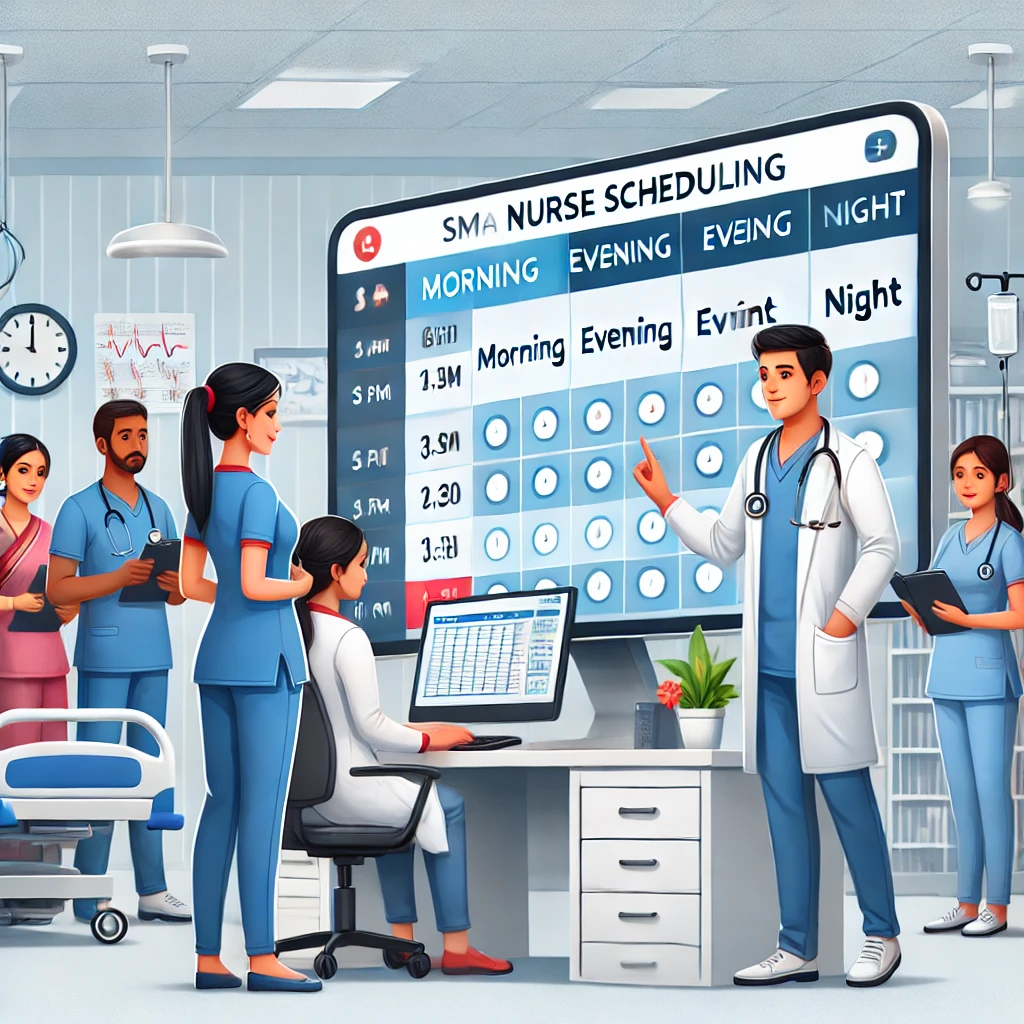
How Smart Scheduling Can Save Hospital Millions
Prepare for the future of healthcare operations with AI-driven scheduling solutions for optimal efficiency. Empower hospitals to optimize resources, reduce costs, and enhance patient care with smart scheduling systems.
Introduction
Hospitals operate in an increasingly complex environment, balancing rising costs, patient care standards, and operational efficiency. Inefficiencies in scheduling often lead to wasted resources, high turnover rates, and financial strain. Key challenges include idle operating rooms, staff burnout, and long patient wait times.
Hospitals need a dynamic, data-driven scheduling solution to address these inefficiencies. By leveraging predictive analytics and artificial intelligence (AI), hospitals can streamline operations, improve resource utilization, and provide better patient care while reducing costs and increasing profitability.
Solutions
Smart scheduling, powered by cutting-edge AI and analytics, transforms hospital operations by providing real-time insights and dynamic planning capabilities. This system aligns hospital resources—staff, equipment, and facilities—with patient demand, ensuring maximum efficiency and superior care delivery.
With AI-driven algorithms, hospitals can forecast demand, prevent scheduling gaps, and optimize resource allocation. Predictive insights minimize overtime reliance, balance staff workloads, and reduce patient no-shows. Automated reminders and flexible rescheduling options help ensure appointments are fulfilled, enhancing patient satisfaction and operational flow.
Integrating smart scheduling systems with hospital management platforms enables seamless coordination among departments, from operating theatres to diagnostic imaging. Hospitals can dynamically adjust schedules to accommodate emergencies, maintain compliance with labor regulations, and foster a work-life balance for staff.
Through these combined strengths, hospitals not only reduce operational costs but also elevate patient care standards.
How to make the hospital more efficient?
1. Maximize Resource Utilization
AI-powered scheduling systems minimize downtime by dynamically allocating hospital resources. Operating rooms, imaging equipment, and staff are utilized to their fullest potential, increasing patient throughput without additional costs. For example, a hospital reduced idle OR time by 25% within six months of implementing smart scheduling.
2. Improve Financial Efficiency
Smart scheduling predicts patient inflow and adjusts staffing to avoid overstaffing or understaffing. This reduces costly overtime and improves payroll accuracy. Hospitals save millions annually by aligning budgets with real-time operational needs, ensuring financial resources are directed toward critical priorities.
3. Enhance Staff and Patient Satisfaction
Balanced workloads and predictable scheduling improve staff morale and reduce burnout, fostering a healthier work environment. For patients, shorter wait times and streamlined appointment processes enhance satisfaction and build trust in the hospital's services. A recent study found that hospitals using AI-driven scheduling saw a 20% increase in patient satisfaction scores.
Optimizing Staff Scheduling for Hospital Leave Management Without Compromising Operations
In many hospitals, staff—particularly doctors—often take unscheduled leave, which disrupts workflows, affects patient care, and results in inefficiencies. This can lead to understaffing on critical days, forcing hospitals to reschedule appointments or delay procedures, causing frustration for both patients and staff. Additionally, since these unscheduled absences aren't formally recorded, hospitals may inadvertently pay full salaries despite staff not being present.
A smart scheduling system addresses this issue by proactively increasing the number of designated holidays or off days per month. Here’s how this benefits the hospital and staff:
1. Planned Flexibility
By incorporating additional holidays into the schedule, doctors are provided with more opportunities to take time off without resorting to sudden, unplanned absences. When staff know they have regular breaks, they are less likely to skip work unexpectedly, allowing for better continuity of care.
2. Fair Compensation Alignment
Through smart scheduling, doctors' actual working hours align more accurately with their pay. This prevents unnecessary salary payouts for days they haven't worked. By formalizing leave, hospitals can ensure that payroll reflects real attendance, saving costs in the long run.
3. Improved Staff Morale
Nurses often face burnout due to demanding schedules. Offering additional holidays enhances work-life balance, improving morale and reducing turnover. Happier staff are more productive and committed, contributing to better patient outcomes.
4. Enhanced Operational Efficiency
When leave is planned, hospitals can manage patient loads effectively by reallocating appointments, adjusting shift rotations, or increasing telemedicine consultations on low-staff days. This ensures that operations continue smoothly even during staff holidays.
5. Predictable Patient Scheduling
A structured holiday schedule allows patient appointments and procedures to be planned well in advance, minimizing disruptions and reducing cancellations. This improves patient satisfaction and ensures optimal use of hospital facilities.
6. Data-Driven Staffing Models
By analyzing past trends in unscheduled leave, smart scheduling systems can predict patterns and proactively assign holidays during historically low-demand periods. This ensures that patient care remains unaffected, and staff can take time off when the workload is lighter.
Conclusion
Smart scheduling is the cornerstone of efficient, patient-centered hospital management. By optimizing resources, reducing costs, and improving care delivery, hospitals can achieve sustainable growth in an increasingly competitive healthcare landscape.
